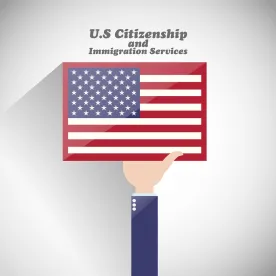The U.S. Citizenship and Immigration Services has published the long-anticipated final rule, “Retention of EB-1, EB-2, and EB-3 Immigrant Workers and Program Improvements Affecting High-Skilled Nonimmigrant Workers.” The rule will take effect on January 17, 2017, before President Barack Obama leaves office.
The rule codifies existing policies in establishing job portability and flexibility for certain nonimmigrants, including foreign nationals in H-1B status as well as applicants whose Adjustment of Status (AOS) applications have been pending for at least 180 days.
The rule also adds the following new provisions and benefits to the employment-based immigrant and nonimmigrant landscape:
-
Provides for retention of I-140 Priority Dates and petition approvals under certain conditions. Beneficiaries of I-140 petitions can retain their Priority Date as long as the I-140 is not revoked for fraud, willful misrepresentation, invalidation or revocation of the underlying Labor Certification, or material error by USCIS. Additionally, I-140 petitions approved for at least 180 days are no longer subject to automatic revocation due strictly to employer withdrawal or termination of the business. This new provision, however, does not eliminate the need for a beneficiary to have an I-140 approved by the intending employer before adjusting status.
-
Allows certain nonimmigrants to apply for a 1-year period of separate employment authorization if they can show compelling circumstances. The individual must be in E-3, H-1B, H-1B1, O-1, or L-1 status, have an approved I-140, be subject to immigrant visa backlog, and meet the “compelling circumstances” standard. This new benefit is intended to be a stopgap measure for high-skilled nonimmigrants who have initiated the green card process and abruptly stop working. Examples of “compelling circumstances” are serious illness or disability, employer retaliation, “other substantial harm,” or significant disruption to the employer. Renewal of this work authorization is allowed in certain circumstances, and beneficiaries will be considered in a period of authorized stay, though they will not be allowed to adjust status until returning in proper nonimmigrant status.
-
Provides grace periods for individuals in certain nonimmigrant status. Nonimmigrants in E-1, E-2, E-3, L-1, and TN status are afforded a 10-day grace period on the front and back end of their status validity period (this rule extends to those visa classifications the grace period already provided to H-1B, O, and P nonimmigrants). Additionally, nonimmigrants in E-1, E-2, E-3, H-1B, H-1B1, L-1, and TN are afforded a grace period of up to 60 days (or until their petition expires, whichever is shorter) when their employment ends before the end of their authorized validity period, so they may more readily pursue new employment and an extension of their nonimmigrant status. This grace period is intended to give nonimmigrants flexibility in changing jobs or employers without suffering negative immigration consequences.
-
Codifies USCIS policy on H-1B cap and fee exemption for nonprofits related to or affiliated with institutions of higher education, while expanding “affiliation” to arrangements in which there is a written affiliation agreement and one of the nonprofit’s “fundamental activities” is contributing directly to the institution’s research or education mission. This new rule replaces USCIS’s “interim guidance” on this ground for H-1B cap exemption — accordingly, the agency will no longer provide “deference” to prior cap exemption adjudications based on affiliation with an institution of higher education.
-
Provides an automatic extension of work authorization in certain circumstances based on the timely filing of an employment authorization document (EAD) renewal application. Eligible applicants may apply up to 180 days prior to expiration of their EAD, doing so will extend work authorization automatically for up to 180 days pending the issuance of the new EAD. The renewal application must be requested on the same basis as that designated on the initial EAD. Further, the EAD must be in a category that does not rely on adjudication of an underlying benefit, such as employment authorization based on the pendency of an AOS application — thus, an EAD based on L-2, J-2, H-4 status, for example, will not qualify for automatic extension.




 />i
/>i

